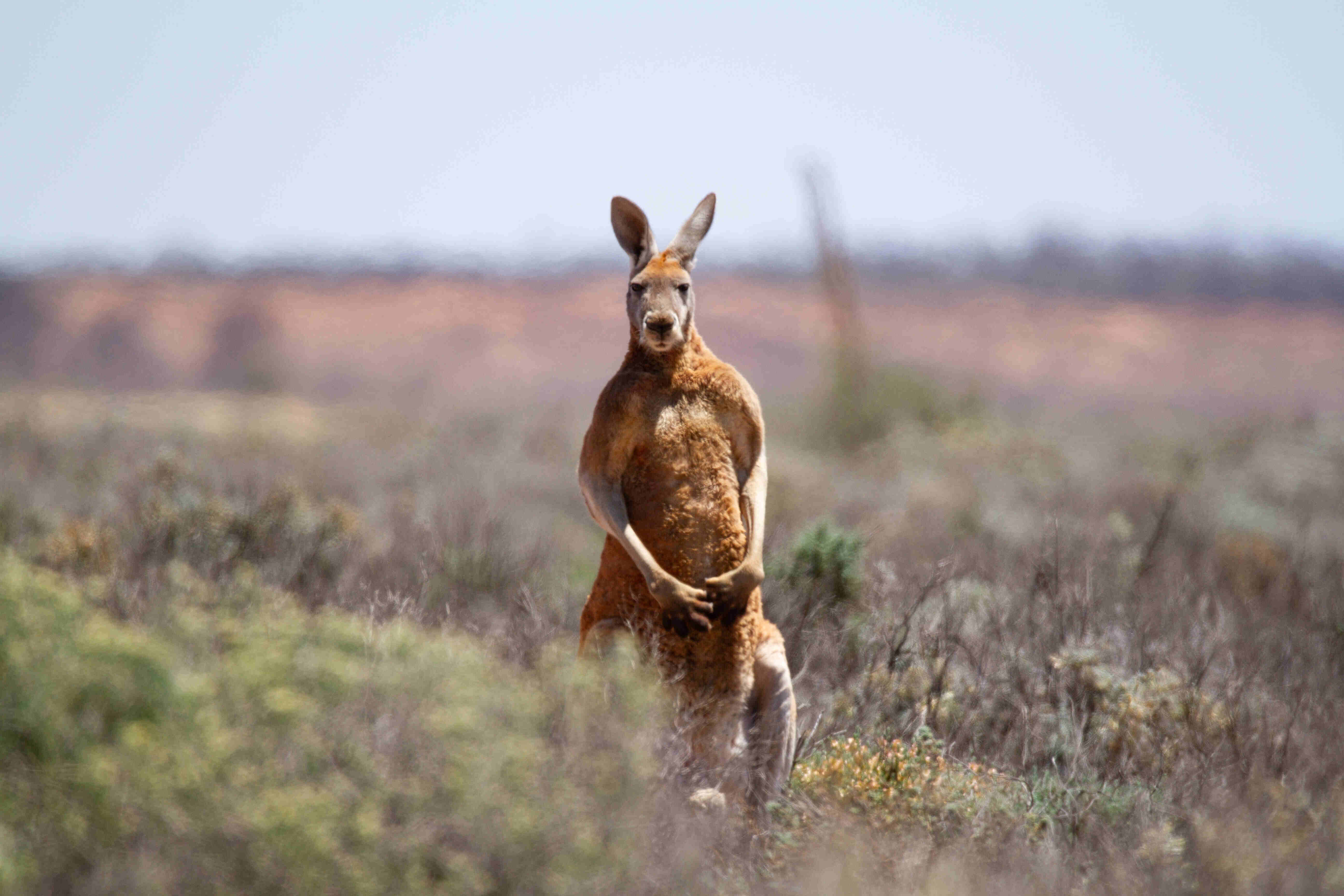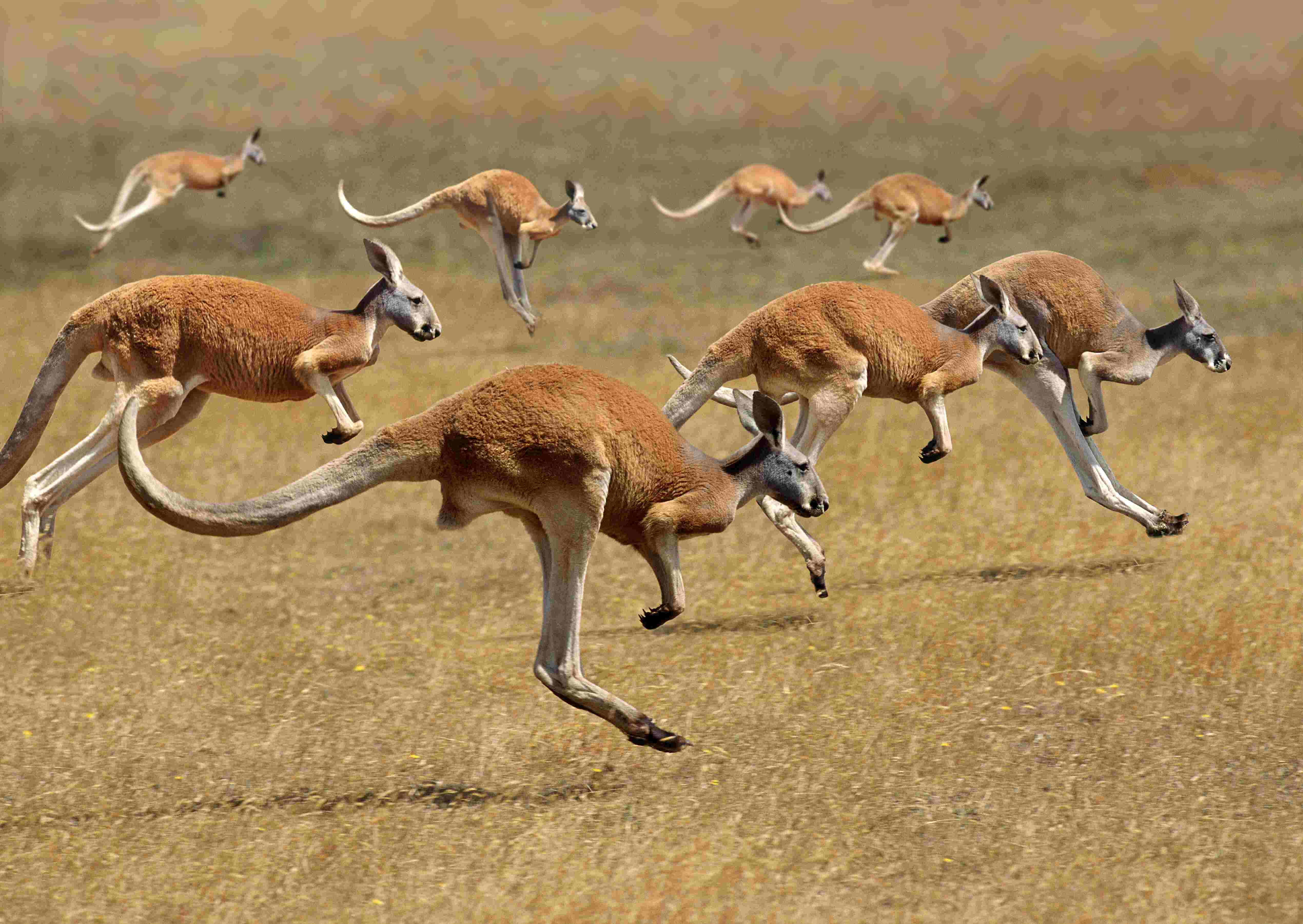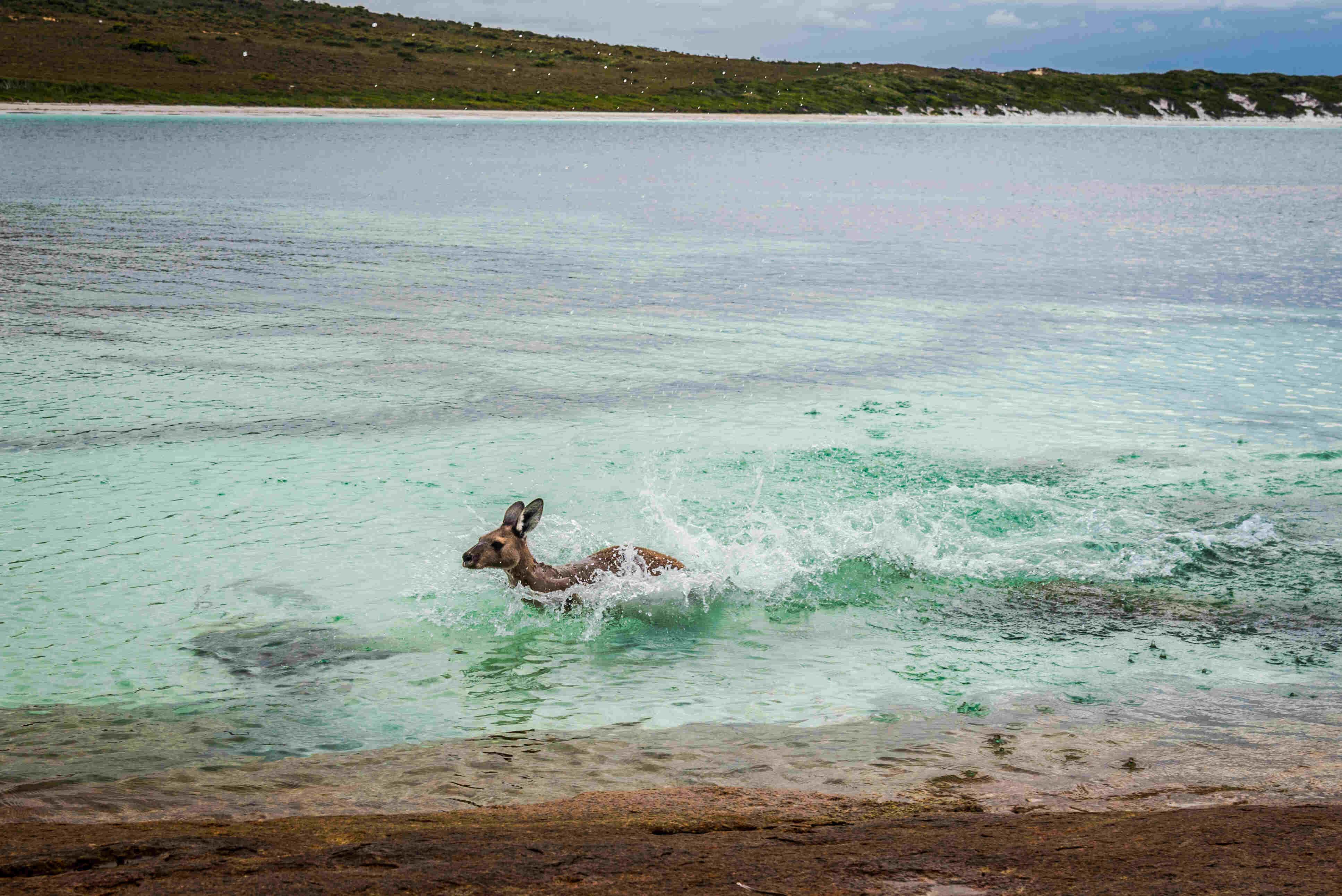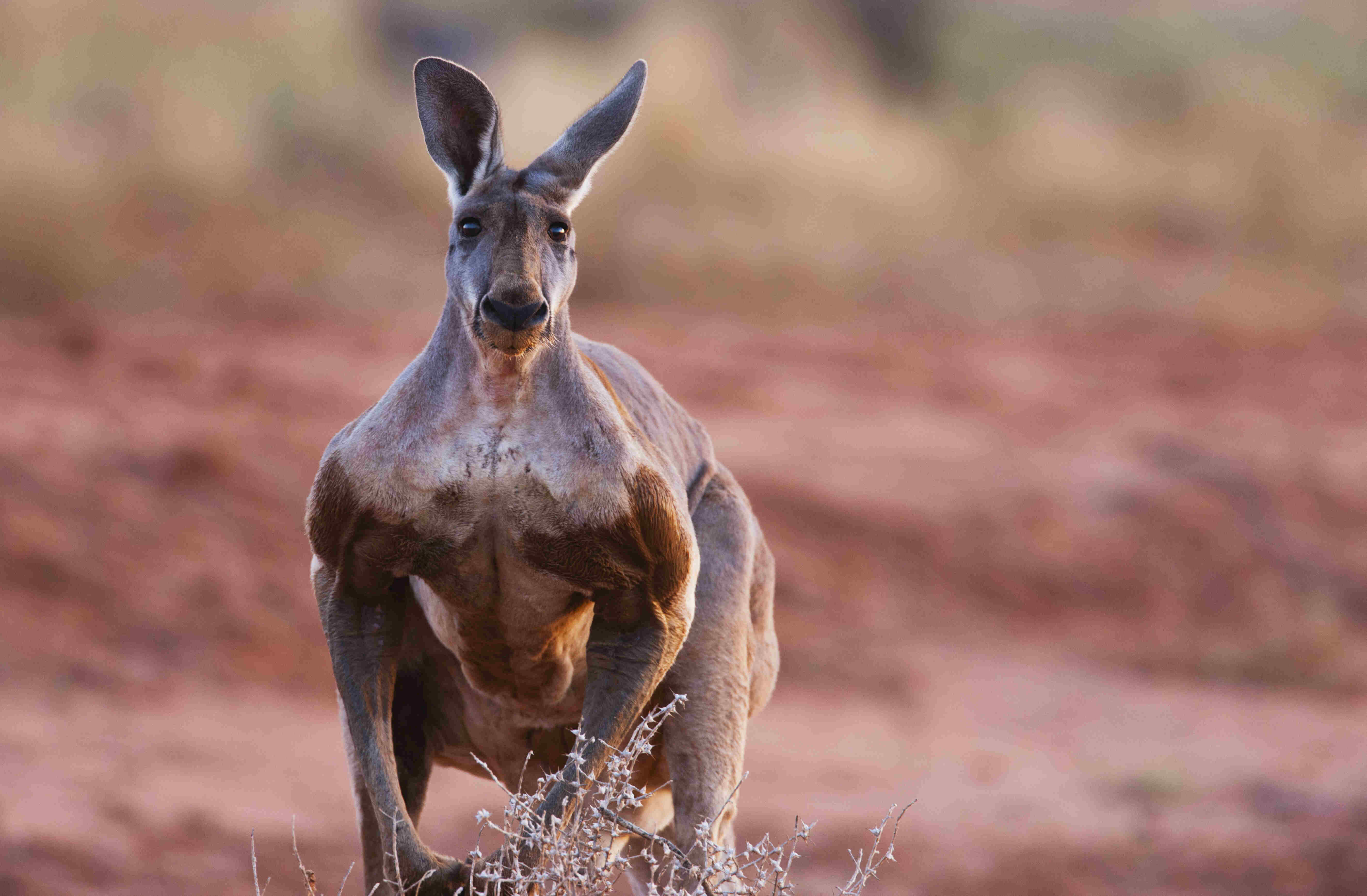
Kangaroos are Australia’s most famous animals, even gracing the country’s coat of arms.
Australia’s most famous animals, kangaroos, are just fascinating and, like all animals, deserving of our protection. Here are 11 interesting facts about kangaroos that will simply amaze you.
1. How high can a kangaroo jump? 30 feet in one bound
Kangaroos are scientifically classified as part of the Macropus genus, which literally means “big foot.” These large back feet, coupled with powerful hind legs, help kangaroos jump an impressive 30 feet long and 10 feet high in a single bound. They can also travel more than 30 miles per hour, with a top speed of 40 miles per hour. Most of the time, they comfortably hop at 15.5 miles per hour.
2. Kangaroos are the largest of all marsupials
Standing at an impressive six feet (from top to tail), kangaroo height can vary among species, but they are, in fact, the largest marsupial species, with males weighing in at approximately 200 pounds. Some kangaroos have even been recorded at eight feet tall!

3. Newborn kangaroo size: just one inch at birth
For the largest marsupial species in the world, they’re sure born tiny! After only five weeks of gestation, joeys—newborn kangaroos—are born only one inch long while they crawl, unassisted, to their mother’s pouch. That’s the size of a grape!
Joeys can even go “dormant” if the mother becomes pregnant while the pouch is in use. Once the young joey leaves the pouch—typically at 10 months old—the mother’s body will send hormonal signals to start fetal development of the next joey.
4. What do you call a group of kangaroos? A mob
While not the mob, kangaroos reside in groups dubbed mobs (a large and disorderly crowd) by Australians. Other terms for their groups include troops or herds, and they typically consist of 50 or more individuals, though they can certainly live in smaller groups. The average kangaroo lifespan is 23 years in the wild!

5. What do kangaroos eat? An herbivore’s diet
With a chambered stomach similar to cows, kangaroos feast on a wide variety of plants, though a kangaroo’s diet changes depending on which species they are. To help with digestion, kangaroos will regurgitate their food before chewing and swallowing it again, with their highly specialized teeth helping them break down low trees, grasses, and leafy shrubs effectively. Their chambered stomachs are different enough from ruminants that they emit only 27 percent of the methane cows do, despite similar diets.
6. Kangaroo species: four types in Australia
While the most iconic species of kangaroo we think of is the red kangaroo, they aren’t the only species. The heaviest and largest species is joined by the eastern grey kangaroo, the western grey kangaroo, and the antilopine wallaroo (or wallaby). The western grey kangaroo also breaks down further into two subspecies: the Macropus fuliginosus melanops and the Macropus fuliginosus fuliginosus.
7. Kangaroos are primarily left-handed
According to researchers, individuals from the red kangaroo and eastern grey species have been observed using their left hand about 95 percent of the time to complete important tasks such as grooming or eating. Kangaroos typically use their right hand for strength and left hand for precision, challenging the assumption that handedness is unique to primates (like us humans).
8. Kangaroos are very good swimmers
Though they have very few natural predators, they have been known to use water to avoid or escape predators like dingoes, using their powerful tails to help them swim away. In fact, kangaroos will sometimes lure their “enemies” into the water, where they’ll use their powerful front paws (with a punch force of 275 pounds, same as humans) to drown the pursuing predator.

9. Kangaroos can’t hop backward
What gives them the ability to hop great heights and lengths—their powerful hind legs and tail—ensures kangaroos cannot move backward, as these appendages help them keep balanced. These iconic animals are featured on the Australian coat of arms as a symbol of natural progress: only moving forward, never backward.
10. Kangaroo strength: powerful bite and strike force
A kangaroo has the same bite force as a grizzly bear at a whopping 975 PSI (6 times a human’s bite force) and a paw swiping force of 8,800 lb-ft/s (8 times what a human creates).

11. Kangaroos are killed in large numbers for meat and skins
Despite their iconic stature, kangaroo killing quotas are in the millions each year as their meat and skins are exported to over 70 countries. In 2023, Australia’s government allowed for the killing of up to five million individuals, though percentages ranging from 10 percent to 20 percent of the local population are specific to each state.
The animals are temporarily blinded by a light before hunters cruelly shoot them, sometimes leaving them to bleed out, while orphaned joeys are bludgeoned or suffer an agonizing death due to the elements or starvation.
You can take action to help protect kangaroos
The New York State legislature has introduced a bill that would ban the sale and manufacture of kangaroo leather, or K-leather, products throughout the state. World Animal Protection US has joined forces with Voters For Animal Rights, the lead organization on the bill, in support of this crucial legislation.
If you’re a New York resident, please take action today and email your New York State representatives urging them to co-sponsor the bill to ban kangaroo leather.
Not a New York resident? Download our specialized toolkit so you can help ban the sale and manufacture of wild animal products in your area!